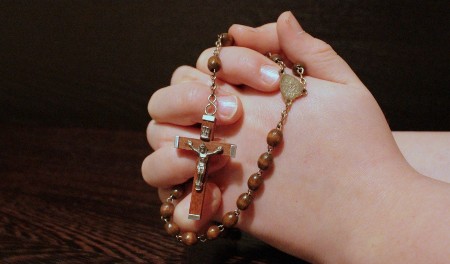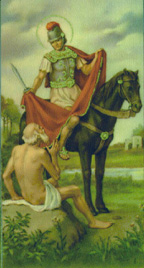 Hi readers, it seems you use Catholic Online a lot; that's great! It's a little awkward to ask, but we need your help. If you have already donated, we sincerely thank you. We're not salespeople, but we depend on donations averaging $14.76 and fewer than 1% of readers give. If you donate just $5.00, the price of your coffee, Catholic Online School could keep thriving. Thank you. Help Now >
Hi readers, it seems you use Catholic Online a lot; that's great! It's a little awkward to ask, but we need your help. If you have already donated, we sincerely thank you. We're not salespeople, but we depend on donations averaging $14.76 and fewer than 1% of readers give. If you donate just $5.00, the price of your coffee, Catholic Online School could keep thriving. Thank you. Help Now >
Studion
FREE Catholic Classes
(Latin Studium ), the most important monastery at Constantinople, situated not far from the Propontis in the section of the city called Psamathia. It was founded in 462 or 463 by the consul Studios (Studius), a Roman who had settled in Constantinople, and was dedicated to St. John the Baptist. Its monks came from the monastery of Acoemetae. At a later date the laws and customs of Studion were taken as models by the monks of Mount Athos and of many other monasteries of the Byzantine Empire ; even today they have influence. The Studites gave the first proof of their devotion to the Faith and the Church during the schism of Acacius (484-519); they also remained loyal during the storms of Iconoclastic dispute in the eighth and ninth centuries. They were driven from the monastery of Studion and the city by Emperor Constantine Copronymus; after his death (775), however, some of them returned. Abbot Sabbas zealously defended the Catholic doctrines against the Iconoclasts at the Seventh Ecumenical Council in Nicaea (787). His successor was St. Theodore of Studion to whom the monastery owes the most of its fame, and who especially fostered study. During St. Theodore's administration also the monks were harassed and driven away several times, some of them being put to death. Theodore's pupil Naucratius re-established discipline after the Iconoclastic dispute had come to an end. Abbot Nicholas (848-5 and 855-58) refused to recognize the Patriarch Photius and was on this account imprisoned in the Studion. He was succeeded by five abbots who recognized the patriarch. The brilliant period of the Studion came to an end at this time. In the middle of the eleventh century, during the administration of Abbot Simeon, a monk named Nicetas Pectoratus (Stethatos) made a violent attack on the Latins in a book which he wrote on unleavened bread, the Sabbath, and the marriage of priests. In 1054 he was obliged to recant in the presence of the emperor and of the papal legates and to throw his book into the fire, but he began the dispute again later. As regards the intellectual life of the monastery in other directions it is especially celebrated for its famous school of calligraphy which was established by St. Theodore. In he eighth and eleventh centuries the monastery was the centre of Byzantine religious poetry; a number of the hymns are still used in the Greek Church. Besides St. Theodore and Nicetas, a number of other theological writers are known. In 1204 the monastery was destroyed by the Crusaders and was not rebuilt until 1290; the greater part of it was again destroyed when the Turks captured Constantinople (1453). The only part now in existence is the Church of St. John Baptist, probably the oldest remaining church in Constantinople, a basilica which still preserves from the early period two stories of columns on the sides and a wooden ceiling, and which is now the mosque Imrachor-Dschamissi.
Join the Movement
When you sign up below, you don't just join an email list - you're joining an entire movement for Free world class Catholic education.
-

-
Mysteries of the Rosary
-
St. Faustina Kowalska
-
Litany of the Blessed Virgin Mary
-
Saint of the Day for Wednesday, Oct 4th, 2023
-
Popular Saints
-
St. Francis of Assisi
-
Bible
-
Female / Women Saints
-
7 Morning Prayers you need to get your day started with God
-
Litany of the Blessed Virgin Mary
The Power of the Rosary: Why Praying the Rosary Matters for Catholics
-

Lasers Reveal Hidden Mayan City of Valeriana with 6,500 Structures in Mexico
-

Embracing Peace and Unity in a Time of Division
-
The 'Black Legend': Historian Argues Anti-Catholic Bias in Spanish Conquest Narratives
-
This Catholic Hero Who Fought Against Communism Should Be Released Immediately
Daily Catholic
 Daily Readings for Monday, November 11, 2024
Daily Readings for Monday, November 11, 2024 St. Martin of Tours: Saint of the Day for Monday, November 11, 2024
St. Martin of Tours: Saint of the Day for Monday, November 11, 2024 Prayer for Deceased Veterans: Prayer of the Day for Monday, November 11, 2024
Prayer for Deceased Veterans: Prayer of the Day for Monday, November 11, 2024- Daily Readings for Sunday, November 10, 2024
- St. Leo the Great: Saint of the Day for Sunday, November 10, 2024
- Evening Prayers: Prayer of the Day for Saturday, November 09, 2024
![]()
Copyright 2024 Catholic Online. All materials contained on this site, whether written, audible or visual are the exclusive property of Catholic Online and are protected under U.S. and International copyright laws, © Copyright 2024 Catholic Online. Any unauthorized use, without prior written consent of Catholic Online is strictly forbidden and prohibited.
Catholic Online is a Project of Your Catholic Voice Foundation, a Not-for-Profit Corporation. Your Catholic Voice Foundation has been granted a recognition of tax exemption under Section 501(c)(3) of the Internal Revenue Code. Federal Tax Identification Number: 81-0596847. Your gift is tax-deductible as allowed by law.






 Daily Readings for Monday, November 11, 2024
Daily Readings for Monday, November 11, 2024 St. Martin of Tours: Saint of the Day for Monday, November 11, 2024
St. Martin of Tours: Saint of the Day for Monday, November 11, 2024 Prayer for Deceased Veterans: Prayer of the Day for Monday, November 11, 2024
Prayer for Deceased Veterans: Prayer of the Day for Monday, November 11, 2024

